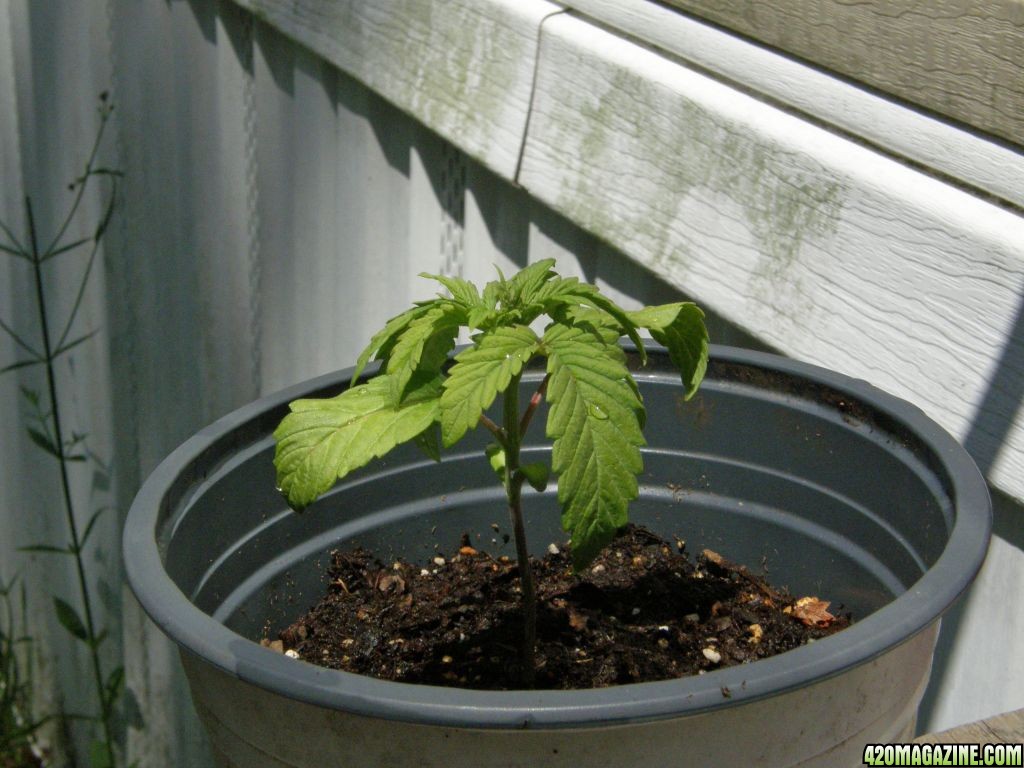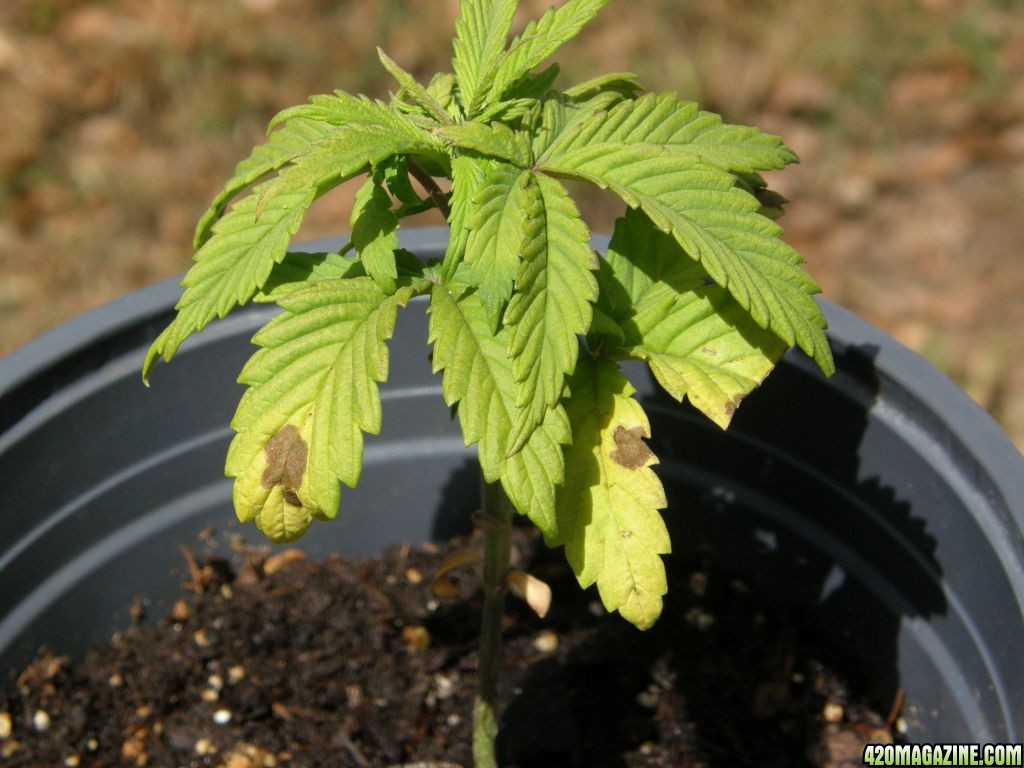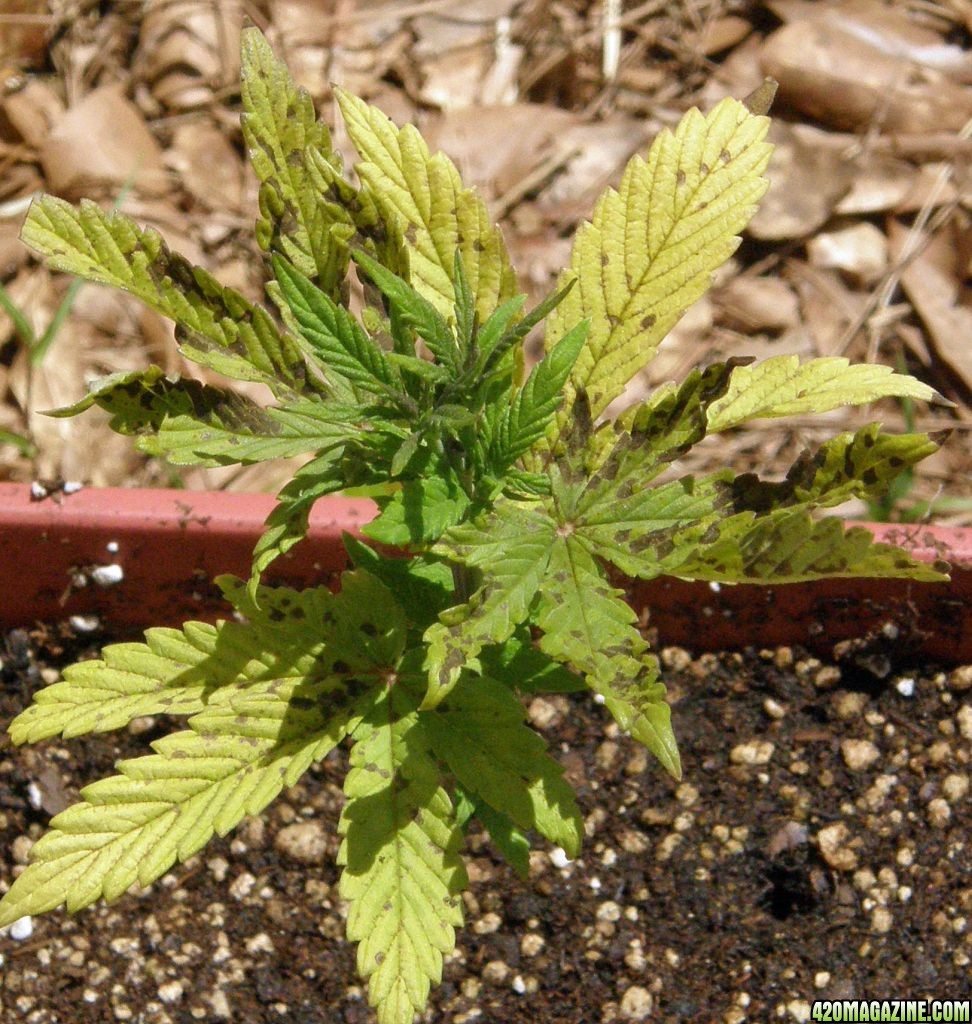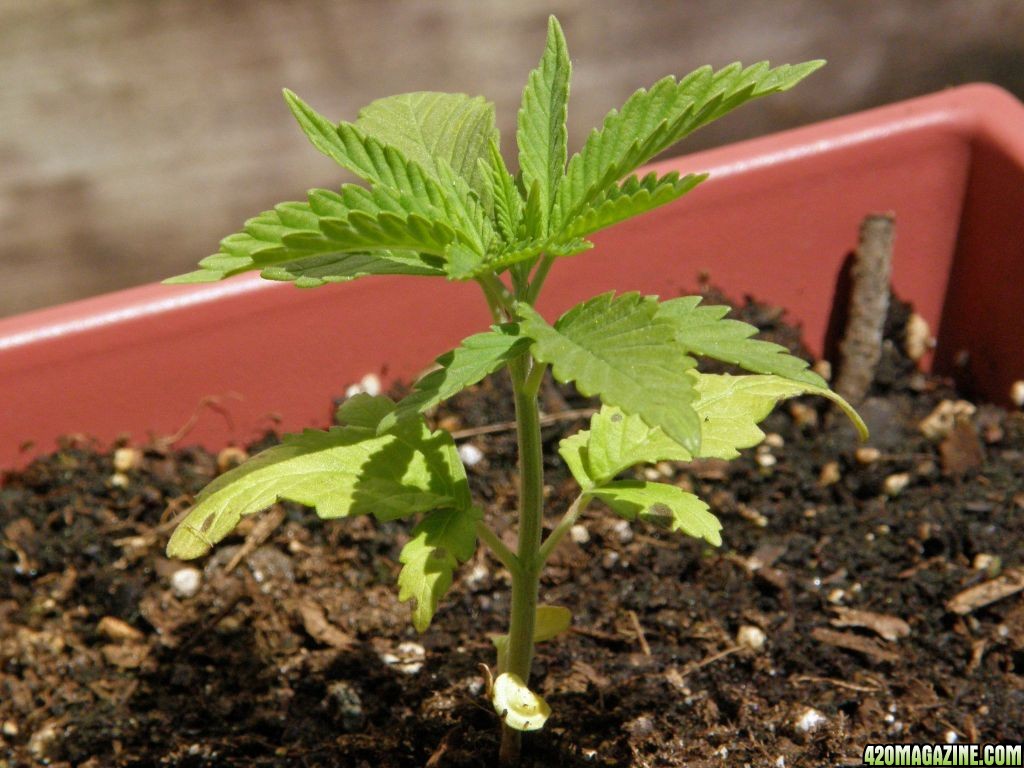Tecumseh
New Member
Well, here we are in week 4 of veg of my first grow. Things could be going better. I'm hoping that I can salvage my plants.
strain: Blue City Diesel (from Jordan of the Islands)
# of plants: 2
3rd and 4th week of veg ( one took 5 days longer to sprout, was injured)
soil: Miracle Grow Moisture Control potting soil (nutes added)
light: 90w LED (Lighthouse Hydro) / 4-6 hrs/day direct sunlight hrs light(24/0)
grow space: 2.5'x2.5'x5' closet painted flat white/ceiling exhaust fan, 2 4" vents for air intake at floor level
temperature: indoors 73-77 , outdoors 80-90
humidity: 50% (+/-5%)
pH of H2O: 7.0
pH of runoff: 6.0 (maybe a little over, all I have for testing is a crappy soil pH meter from Home Depot and test strips 1-14 only whole increments)
For starters, I realize now that I should not have used the Miracle grow. I should have read more before beginning. What's done is done. I'm just hoping to save these poor plants from my best intentions. The first plant started showing yellowing of the lower leaves at about 2.5 weeks. They're yellowing from the tips back toward the plant. I've been cutting the yellowing leaves off once they look like they're pretty much gone. I've removed 3 sets of leaves so far. The ugliness just keeps moving up the plant as it grows. I've been removing the old yellow leaves so that the new younger growth toward the lower parts of the plant will get more light. This may be a mistake, I don't know. I'm a noob. Recently I've noticed that the younger plant's lower leaves are starting to yellow now too. I have transplanted both plants into larger pots with a mix of peat,verm and top soil. The top soil has no NPK info on the bag. The next day the larger of the 2 plants developed these spots all over the older growth and the leaves started twisting.
I've ordered a pH meter and TDS meter to test my H2O. I don't really have a specific question. I'm hoping someone can just offer some encouraging words or advice. So, here are some pix. If you can help me, thank you.
the older plant before the yellowing started

and it begins, after the yellowing started I fed it a small amout with a very dilute(about 1/8 strength) 24-8-16 all purpose fert, here's what happened next, brown spots

And this is the plant today, 1 day after transplanting to a new, larger container and a peat,verm,soil mix (pH ?)

Here's the younger plant. Note the yellowing starting on the lower leaves. And, they're getting spots too.

Any ideas?
strain: Blue City Diesel (from Jordan of the Islands)
# of plants: 2
3rd and 4th week of veg ( one took 5 days longer to sprout, was injured)
soil: Miracle Grow Moisture Control potting soil (nutes added)
light: 90w LED (Lighthouse Hydro) / 4-6 hrs/day direct sunlight hrs light(24/0)
grow space: 2.5'x2.5'x5' closet painted flat white/ceiling exhaust fan, 2 4" vents for air intake at floor level
temperature: indoors 73-77 , outdoors 80-90
humidity: 50% (+/-5%)
pH of H2O: 7.0
pH of runoff: 6.0 (maybe a little over, all I have for testing is a crappy soil pH meter from Home Depot and test strips 1-14 only whole increments)
For starters, I realize now that I should not have used the Miracle grow. I should have read more before beginning. What's done is done. I'm just hoping to save these poor plants from my best intentions. The first plant started showing yellowing of the lower leaves at about 2.5 weeks. They're yellowing from the tips back toward the plant. I've been cutting the yellowing leaves off once they look like they're pretty much gone. I've removed 3 sets of leaves so far. The ugliness just keeps moving up the plant as it grows. I've been removing the old yellow leaves so that the new younger growth toward the lower parts of the plant will get more light. This may be a mistake, I don't know. I'm a noob. Recently I've noticed that the younger plant's lower leaves are starting to yellow now too. I have transplanted both plants into larger pots with a mix of peat,verm and top soil. The top soil has no NPK info on the bag. The next day the larger of the 2 plants developed these spots all over the older growth and the leaves started twisting.
I've ordered a pH meter and TDS meter to test my H2O. I don't really have a specific question. I'm hoping someone can just offer some encouraging words or advice. So, here are some pix. If you can help me, thank you.
the older plant before the yellowing started

and it begins, after the yellowing started I fed it a small amout with a very dilute(about 1/8 strength) 24-8-16 all purpose fert, here's what happened next, brown spots

And this is the plant today, 1 day after transplanting to a new, larger container and a peat,verm,soil mix (pH ?)

Here's the younger plant. Note the yellowing starting on the lower leaves. And, they're getting spots too.

Any ideas?





 , also only water the plants when the soil is dry and the pot feels light and add nutrients to the manufacturers specifications.... dont give up
, also only water the plants when the soil is dry and the pot feels light and add nutrients to the manufacturers specifications.... dont give up 